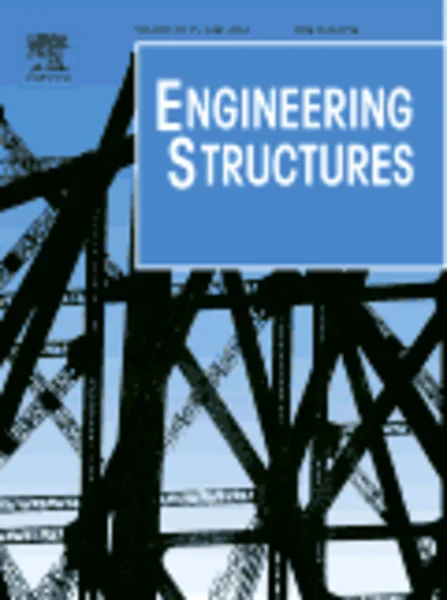-
preconsolidation, structural strength of soil, and its effect on subsoil upper structure interaction
جزئیات بیشتر مقاله- تاریخ ارائه: 1392/07/24
- تاریخ انتشار در تی پی بین: 1392/07/24
- تعداد بازدید: 939
- تعداد پرسش و پاسخ ها: 0
- شماره تماس دبیرخانه رویداد: -
when constructing a building, manufactured materials are used. that is the reason for their excellent material properties. in the case of the foundation, the natural condition of the soils must mostly always be respected. the geostatical stress plays a significant role on the subsoil behavior because it is the de facto natural form of the soil compaction. the soil has a memory of the highest stress that has ever been loaded on it. the soil can be considered incompressible if the magnitude of a surcharge is lower. in engineering practice the construction of higher buildings is founded in a deeper hole so that the depth of the influence zone achieves an acceptable value for the future surcharge of the upper structure. for very tall buildings, the deep hole foundation must be prolonged by piles. in particular, this article deals with laboratory testing that provides the preconsolidation. in czech, we term it the structural strength of soil. the test provides the initial void ratio as well as the initial coefficient of fully saturated hydraulic conductivity. the isotropic consolidation test with the triaxial test apparatus and consequent knowledge of the pore pressure course was chosen to determine the initial soil properties, including the preconsolidation level. derived theory together with the genetic algorithms provide an efficient tool for the determining parameters. good knowledge of the influence zone is crucial when solving soil structure interaction. the progress of the influence zone was considered from the extensive research carried out at the university of brasília, brazil. thus, using the measurements, the preconsolidation and its effect were verified in situ. the derived formulas and presented graphs for influence zone depth estimation have considerable importance for civil engineering practice. the kantorovich method together with the strategy of convolution was used to reach dimensional reduction when deriving analytical formulas. recommended results and formulas were verified against fem code adina.
مقالات جدیدترین رویدادها
-
استفاده از تحلیل اهمیت-عملکرد در ارائه الگوی مدیریت خلاقیت سازمانی و ارائه راهکار جهت بهبود
-
بررسی تاثیر ارزش وجوه نقد مازاد بر ساختار سرمایه شرکت های پذیرفته شده در بورس اوراق بهادار تهران
-
بررسی تأثیر سطح افشای ریسک بر قرارداد بدهی شرکت های پذیرفته شده در بورس اوراق بهادار تهران
-
بررسی تأثیر رتبه بندی اعتباری مبتنی بر مدل امتیاز بازار نوظهور بر نقد شوندگی سهام با تأکید بر خصوصی سازی شرکت ها
-
تأثیر آمیخته بازاریابی پوشاک ایرانی بر تصویر ذهنی مشتری پوشاک ایرانی (هاکوپیان)
-
اثر میدان الکترومغناطیسی ضعیف بر مرگ جنینی داخل رحمی و مگاکاریوسیت های مغز استخوان نوزادان موش nmri
-
بررسی تاثیر مسلح سازی خاک دانه ای با ژئوسینتتیک اجرا شده بصورت افقی در پایداری شیروانی های درحالت استاتیکی
-
بررسی رابطه بین ابعاد فرهنگی هافستده و رفتار شهروندی سازمانی کارکنان
-
studies on the load carrying capacity of shallow foundation resting over geogrid-reinforced sand under eccentric load
-
the effect of interlex and wordbanker vocabulary learning softwares on iranian efl learners' vocabulary learning
مقالات جدیدترین ژورنال ها
-
مدیریت و بررسی افسردگی دانش آموزان دختر مقطع متوسطه دوم در دروان کرونا در شهرستان دزفول
-
مدیریت و بررسی خرد سیاسی در اندیشه ی فردوسی در ادب ایران
-
واکاوی و مدیریت توصیفی قلمدان(جاکلیدی)ضریح در موزه آستان قدس رضوی
-
بررسی تاثیر خلاقیت، دانش و انگیزه کارکنان بر پیشنهادات نوآورانه کارکنان ( مورد مطالعه: هتل های 3 و 4 ستاره استان کرمان)
-
بررسی تاثیر کیفیت سیستم های اطلاعاتی بر تصمیم گیری موفق در شرکتهای تولیدی استان اصفهان (مورد مطالعه: مدیران شرکتهای تولیدی استان اصفهان)
-
نظریه افتراق زنان و تحلیل آن در رمان هرس نوشته نسیم مرعشی
-
برخی موضوعات درباره نظریه سازمان شدگی:یک تحلیل انتقادی
-
ارائه مدل دلبستگی سازمانی در سازمان های دولتی
-
سایه های اندیشه سقراط در روش درمان دیالکتیکی
-
مروری بر اثر فاکتورها و روش های خشک کردن گیاهان دارویی در فرآیند های پس از برداشت، روی کمیت و کیفیت گیاهان دارویی




سوال خود را در مورد این مقاله مطرح نمایید :